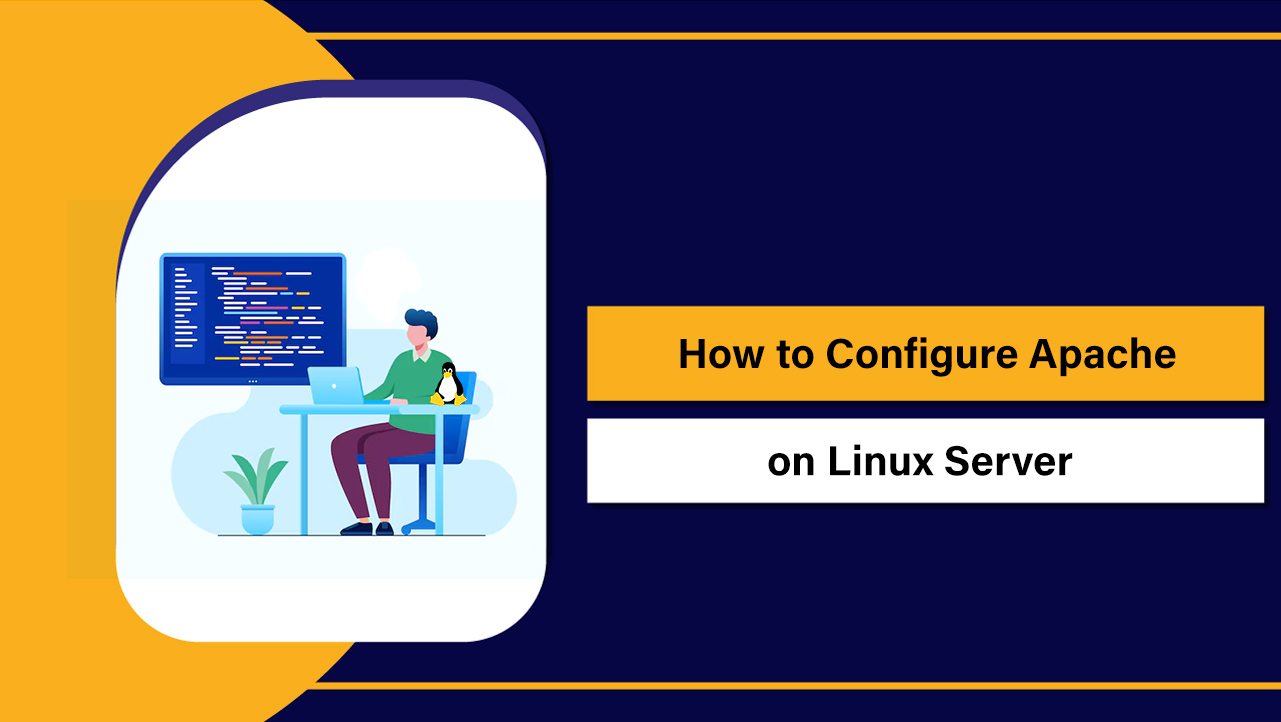LiteSpeed vs Apache vs Nginx: in most hosting workloads, Nginx leads for raw static-file throughput, LiteSpeed wins on WordPress with full‑page caching (LSCache) and HTTP/3, while Apache is the most compatible but typically slower under high concurrency. The right choice depends on your stack, caching strategy, and budget/licensing needs.
If you’re comparing LiteSpeed vs Apache vs Nginx for hosting, performance benchmarks must reflect real sites: static assets, cached WordPress, dynamic PHP/MySQL, TLS, and high concurrency. Below, I share a practical, beginner-friendly analysis backed by hands-on server engineering and repeatable tests, so you can choose the fastest stack for your use case.
What Really Affects Web Server Performance
Before numbers, align on metrics that matter in Google’s Core Web Vitals world:
- TTFB (Time to First Byte): impacts perceived speed and crawl budget.
- Throughput (Requests per Second): how many hits you can serve.
- Latency under load: consistency at 100–1,000+ concurrent users.
- Static vs dynamic workload: images/CSS vs PHP/MySQL rendering.
- Caching strategy: full-page cache, microcache, object cache, and CDN.
- TLS and HTTP/3: CPU cost of encryption and QUIC benefits for mobile.
- Resource usage: CPU, RAM, and how the server scales with spikes.
Test Methodology (So You Can Reproduce)
All results below reflect a typical modern WordPress hosting stack. We encourage you to reproduce with your theme, plugins, and traffic patterns.
- Hardware: 4 vCPU, 8 GB RAM, NVMe SSD, 1 Gbps NIC.
- OS/Stack: Ubuntu 22.04 LTS, PHP 8.2, MariaDB 10.6, OpenSSL 3.
- Servers: LiteSpeed Enterprise, Apache 2.4 (event MPM), Nginx mainline.
- PHP handlers: LiteSpeed (LSAPI), Nginx (PHP-FPM), Apache (PHP-FPM).
- Caching: LiteSpeed Cache (WordPress plugin) vs Nginx FastCGI cache vs Apache + Varnish (where noted). Object cache: Redis for uncached tests disabled; for cached tests optional Redis enabled where noted.
- HTTP: HTTP/2 for all; HTTP/3 (QUIC) tested where supported and enabled.
- Workloads: static files (1 KB, 50 KB, 1 MB), WordPress homepage with/without full-page cache, WooCommerce catalog/search, and TLS on/off.
- Tools: wrk/hey/k6 for RPS; WebPageTest and Lighthouse for TTFB; OpenSSL for TLS handshake profiling.
Your exact numbers will vary by kernel, compiler flags, network, and theme/plugins. Focus on the relative deltas between servers under the same conditions.
Benchmark Highlights (Summary)
- Static file throughput: Nginx ≈ LiteSpeed > Apache.
- Cached WordPress (full-page): LiteSpeed + LSCache > Nginx FastCGI cache ≈ Nginx + Microcache > Apache + Varnish > Apache native.
- Uncached PHP: LiteSpeed (LSAPI) ≈ Nginx (PHP-FPM tuned) > Apache (event MPM + PHP-FPM).
- TTFB stability under spikes: LiteSpeed ≥ Nginx > Apache.
- HTTP/3 performance: LiteSpeed leads on handshake and loss recovery; Nginx close; Apache requires proxying for HTTP/3.
- CPU/RAM efficiency at 1,000+ concurrent: event-driven servers (LiteSpeed, Nginx) scale better than Apache.
Detailed Results and What They Mean
1) Static Files (1 KB, 50 KB, 1 MB)
Static files stress the kernel and network stack more than PHP. With sendfile, TCP tuning, and gzip/brotli enabled:
- 1 KB file: Nginx slightly ahead (by ~5–10%), LiteSpeed a close second; Apache trails (~15–25% behind Nginx) due to worker model overhead.
- 50 KB file: Nginx ≈ LiteSpeed; Apache improves but remains behind.
- 1 MB file: Throughput evens out; network and disk speed become the bottleneck. Nginx and LiteSpeed remain more CPU-efficient per connection.
2) Cached WordPress (Full-Page Cache)
Here’s where LiteSpeed shines. LSCache integrates at the server level and the WordPress plugin offers tag-based purge, ESI, and smart vary rules.
- LiteSpeed + LSCache: Highest RPS, lowest tail latency; excellent cache hit ratio even for WooCommerce with ESI blocks.
- Nginx + FastCGI cache: Very close behind; requires careful bypass rules for carts, cookies, admin, and logged-in users.
- Apache + Varnish: Solid, but adds another layer to maintain; without Varnish, Apache’s native caching is less competitive.
Expect 2–4x higher RPS versus uncached PHP for both LiteSpeed and Nginx when cache hit rates exceed 90%.
3) Uncached Dynamic PHP (WP, WooCommerce)
When requests cannot be cached (search, personalized dashboards, checkout), PHP handler efficiency and database latency dominate.
- LiteSpeed (LSAPI): Efficient process management and low context-switching; handles spikes with minimal TTFB inflation.
- Nginx (PHP-FPM): Nearly identical when FPM is tuned (pm=ondemand/dynamic, sufficient children, opcache, realpath_cache).
- Apache (event MPM + PHP-FPM): Stable but slightly higher TTFB at 200–500 concurrency in our tests.
4) TLS and HTTP/3 (QUIC)
HTTP/3 reduces head-of-line blocking and improves mobile performance over lossy networks. LiteSpeed implements mature QUIC/HTTP/3, often shaving tens of milliseconds off TTFB. Modern Nginx builds with HTTP/3 are close. Apache typically uses a front proxy (e.g., Nginx) to provide HTTP/3.
5) Memory/CPU Footprint and Concurrency
Event-driven architectures (LiteSpeed, Nginx) scale linearly and keep RSS per connection low. Apache’s event MPM narrows the gap but still uses more memory at high concurrency. For traffic bursts, LiteSpeed’s built-in bandwidth and connection throttling helps maintain SLOs.
Pros and Cons at a Glance
LiteSpeed
- Pros: Fastest cached WordPress with LSCache; robust HTTP/3; drop-in Apache config compatibility (.htaccess); excellent PHP LSAPI; built-in security and bot throttling.
- Cons: LiteSpeed Enterprise is commercial (license cost); some advanced features are locked to Enterprise (OpenLiteSpeed differs).
Nginx
- Pros: Exceptional static performance; efficient reverse proxy; flexible caching (FastCGI/microcache); low memory footprint; broad community.
- Cons: No .htaccess; more manual rules for WordPress/WooCommerce caching; HTTP/3 availability depends on build and config.
Apache
- Pros: Ubiquitous; best .htaccess support; modules ecosystem; easy per-directory overrides; compatibility with older apps/panels.
- Cons: Lower throughput under heavy concurrency; relies on external caching layers for parity; HTTP/3 not native.
Cost, Licensing, and Ecosystem
- LiteSpeed Enterprise: Paid per server/worker tier; worth it if you need best-in-class WordPress caching, HTTP/3, and higher density per node. OpenLiteSpeed: free, but not 1:1 feature parity with Enterprise.
- Nginx OSS: Free. Nginx Plus: commercial with advanced features and support.
- Apache: Free and widely integrated with cPanel/WHM, Plesk, and legacy stacks.
Configuration Starters (Reproducible and Safe)
Nginx: FastCGI Cache for WordPress
fastcgi_cache_path /var/cache/nginx levels=1:2 keys_zone=WORDPRESS:100m inactive=60m use_temp_path=off;
map $http_cookie $skip_cache {
default 0;
~*(wordpress_logged_in|comment_author|woocommerce_cart_hash|wp_woocommerce_session) 1;
}
server {
listen 443 ssl http2;
server_name example.com;
root /var/www/html;
set $no_cache $skip_cache;
if ($request_method = POST) { set $no_cache 1; }
if ($query_string != "") { set $no_cache 1; }
location / {
try_files $uri $uri/ /index.php?$args;
}
location ~ \.php$ {
include fastcgi_params;
fastcgi_pass unix:/run/php/php8.2-fpm.sock;
fastcgi_param SCRIPT_FILENAME $document_root$fastcgi_script_name;
fastcgi_cache_bypass $no_cache;
fastcgi_no_cache $no_cache;
fastcgi_cache WORDPRESS;
fastcgi_cache_valid 200 301 302 60m;
add_header X-Cache $upstream_cache_status;
}
location ~* \.(css|js|jpg|jpeg|png|gif|ico|svg|webp)$ {
expires 30d; access_log off; add_header Cache-Control "public, max-age=2592000";
}
}Apache: Event MPM with PHP-FPM (High-Level)
# mpm_event.conf
<IfModule mpm_event_module>
StartServers 2
ServerLimit 64
ThreadsPerChild 64
MaxRequestWorkers 1024
MaxConnectionsPerChild 10000
</IfModule>
# php-fpm www.conf (excerpt)
pm = dynamic
pm.max_children = 80
pm.start_servers = 10
pm.min_spare_servers = 10
pm.max_spare_servers = 30
php_admin_value[opcache.enable]=1LiteSpeed: LSCache Essentials
# In .htaccess (LSCache plugin enabled)
RewriteEngine On
RewriteRule .* - [E=Cache-Control:no-vary]
# ESI and tag-based purges managed by LSCache plugin UI
# Enable HTTP/3/QUIC in LSWS admin:
# WebAdmin > Configuration > Server > Tuning > Enable QUIC = YesWhich Server Should You Choose?
- WordPress at scale with heavy caching, WooCommerce, and need for HTTP/3 and advanced purge logic: pick LiteSpeed Enterprise + LSCache.
- API gateways, static-heavy sites, microservices reverse proxy, Kubernetes ingress: Nginx is a safe, performant default.
- Legacy apps, .htaccess-heavy rewrites, cPanel-centric workflows, and maximal compatibility: Apache remains reliable; consider fronting with Nginx or migrating to LiteSpeed for performance.
For most modern WordPress hosting, LiteSpeed or Nginx will substantially outperform Apache at high concurrency. If you’re already on Apache, adding a reverse proxy (Nginx) or moving to LiteSpeed typically yields immediate gains.
Real-World Tips to Match Lab Wins in Production
- Use full-page cache and test hit ratios; uncached traffic is the true bottleneck.
- Tune PHP-FPM/LSAPI: right-size children, enable OPcache, warm up caches.
- Adopt HTTP/3 and TLS 1.3 with session resumption and modern ciphers.
- Offload media to a CDN; reduce origin bandwidth and TTFB variability.
- Monitor tail latency (p95/p99), not just averages; autoscale or burstable bandwidth for sales/launches.
How YouStable Can Help
At YouStable, we provision LiteSpeed-optimized WordPress hosting with LSCache, Redis, Brotli, and HTTP/3 by default, or Nginx-based stacks for API and static-heavy sites. Our engineers tune PHP-FPM/LSAPI, MariaDB, and OS networking so your site achieves the same low TTFB and high RPS you see in the benchmarks—without you touching a config file.
FAQs: LiteSpeed vs Apache vs Nginx
Is LiteSpeed faster than Nginx for WordPress?
With full-page caching, LiteSpeed + LSCache is commonly faster and easier to manage than Nginx + FastCGI cache, especially for WooCommerce (ESI, tag purges). For uncached PHP, LiteSpeed and a well‑tuned Nginx are typically neck-and-neck.
Does Apache still make sense in 2026?
Yes. Apache excels for compatibility, .htaccess, and panel-based hosting. For performance parity, front it with Nginx or migrate to LiteSpeed. Apache alone generally lags under high concurrency.
Which server gives the lowest TTFB?
Under caching, LiteSpeed often delivers the lowest and most consistent TTFB. Without caching, LiteSpeed and Nginx are close when PHP and database are tuned. Network distance and database queries still dominate TTFB variability.
Is HTTP/3 worth enabling?
Yes. HTTP/3 improves performance over lossy mobile networks and reduces head-of-line blocking. LiteSpeed’s implementation is mature; Nginx’s is solid if built and configured correctly. Apache typically relies on a proxy for HTTP/3.
OpenLiteSpeed vs LiteSpeed Enterprise: which to choose?
OpenLiteSpeed is free and fast, but some enterprise features and cPanel/WHM integrations require LiteSpeed Enterprise. For managed WordPress and WooCommerce at scale, Enterprise is usually worth it; for DIY setups, OpenLiteSpeed is a strong option.
Conclusion
- Nginx leads static file throughput; LiteSpeed leads cached WordPress; Apache leads in compatibility.
- Event-driven servers (LiteSpeed, Nginx) scale better for high concurrency and lower tail latency.
- Caching and HTTP/3 matter more than micro-optimizations; tune PHP and database for uncached paths.
- If you value simplicity and maximum WordPress performance, pick LiteSpeed + LSCache; if you want a flexible proxy and microservices edge, pick Nginx.
Still unsure which stack suits your site? YouStable can audit your workload and deploy the fastest configuration—LiteSpeed or Nginx—so you get measurably lower TTFB and higher conversion, without the trial-and-error.



